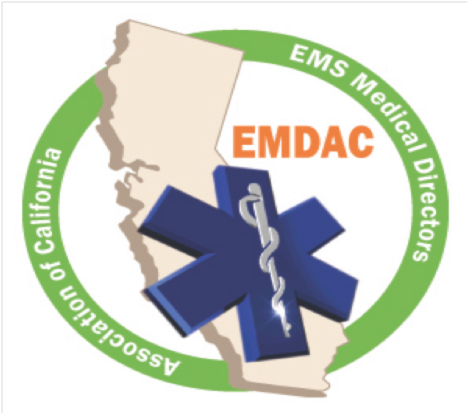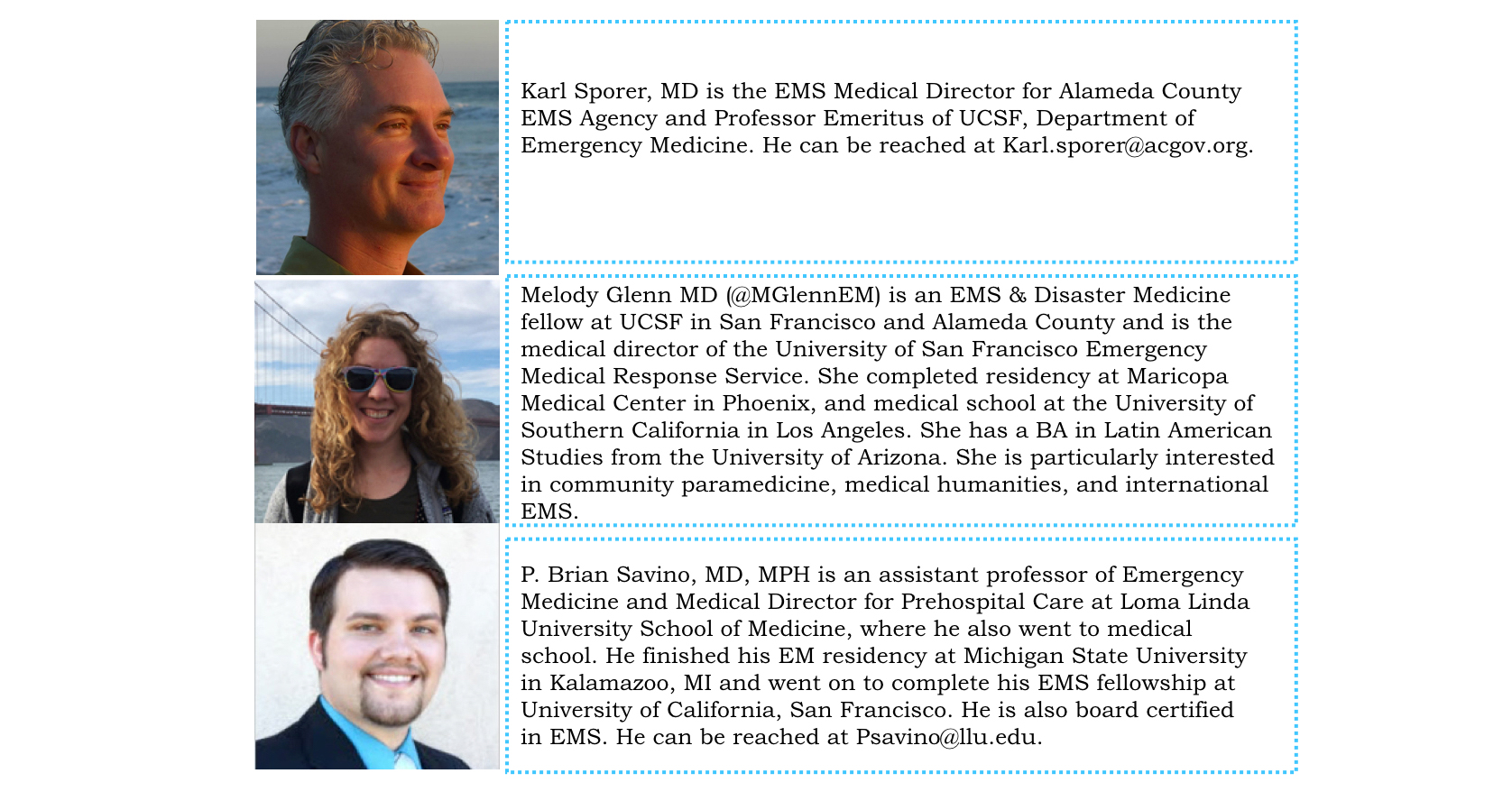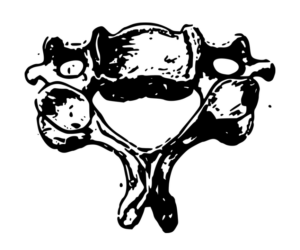by P. Brian Savino, MD; Melody Glenn, MD; Karl A. Sporer, MD

Paramedics respond the scene of a 65-year-old male complaining of chest pain. EKG is suspicious for STEMI. They give an aspirin and start to administer oxygen, even though the patient’s SpO2 is 97%. Based on their county protocols, medics transport the patient to the nearest STEMI receiving center, bypassing the nearest hospital. The patient receives emergency PCI within 60 minutes.
Meanwhile, another set of paramedics are also responding to a 65-year-old male, also complaining of chest pain. They give nitrates, decide not to perform an EKG, and transport the patient to the nearest hospital. The physician performs an EKG and sees that it is concerning for STEMI. The patient is then transferred to a STEMI receiving center, but doesn’t receive his PCI until 120 minutes later.
Who is providing better care? Although certain practices are considered commonplace in the prehospital management of chest pain, are they based on evidence? Or is it just dogma?

A team from California sought to find out. They modified the process that the American College of Emergency Physicians (ACEP) uses to create their clinical policies in order to assign levels of evidence and grade the strength of their recommendations. The California team reviewed relevant studies (summarized in an electronic appendix) and assigned LOE based on the study design, including features such as data collection methods, randomization, blinding, outcome measures and generalizability. LOE I consisted of randomized, controlled trials, prospective cohort studies, meta-analysis of randomized trials or prospective studies, or clinical guidelines/comprehensive review. LOE II consisted of nonrandomized trials and retrospective studies. LOE III consisted of case series, case reports, and expert consensus.
SUPPLEMENTAL OXYGEN THERAPY
Case: Paramedics respond the scene of a 65-year-old male complaining of chest pain. EKG is suspicious for STEMI. They start to administer oxygen, even though the patient’s SpO2 is 97%.
Clinical Question: Does giving oxygen to every patient with chest pain, even if they are not hypoxic, improve outcomes?
Summary of Current Evidence: There have been few randomized controlled studies that have attempted to answer this question. A study in 1976 by Rawles et al. randomized patients to oxygen or air and found more deaths in the oxygen group, although not clinically significant [1]. A more recent trial addressing this question was in 2012 by Ranchord et al. showing no difference in mortality between a titrated oxygen group and a high-flow oxygen group, but with a very small sample size [2]. The ILCOR ACS guidelines in 2010 do not find sufficient evidence to support the use of oxygen in suspected ACS, but do not find evidence of harm [3]. A meta-analysis by Cochrane review (updated in 2013) showed no evidence of benefit and, in fact, showed possible harm with routine oxygen administration in suspected ACS, but noted that the analysis lacked the power to substantiate or refute the use of oxygen in these cases [4]. A recent multicenter, prospective, randomized, controlled trial compared prehospital oxygen (8L/min) with no supplemental oxygen in patients with ST segment myocardial infarction (STEMI) and oxygen saturation of 94% or greater [5]. The authors demonstrated that supplemental oxygen in this group increased early myocardial injury and was associated with larger myocardial infarct size and a higher rate of re-infarction. The DETO2X-AMI trial is ongoing and will examine this question among patients with suspected ACS and should be adequately powered to address this question [6].
Conclusion: Routine oxygen administration to patients with chest pain who are not hypoxic does not improve outcomes. In fact, patients who are experiencing a true cardiac event could even be harmed by excess oxygen. Based on the level of evidence, a Level A recommendation can be made against routine oxygen use for chest pain patients who are not hypoxic. However, if a patient is hypoxic or shows sign of shock, oxygen is recommended.
NITRATES
Case: Paramedics respond the scene of a 65-year-old male complaining of chest pain. EKG is suspicious for STEMI. They start to administer oxygen, even though the patient’s SpO2 is 97%. They give nitrates and ASA and transport to a STEMI center.
Clinical Question: Does giving nitrates such as sublingual nitroglycerin, topical nitroglycerin or nitroglycerin spray improve outcomes in prehospital patients with chest pain?
Summary of Current Evidence: There have been no trials to specifically evaluate the usefulness of nitrates in the field or in the emergency department (ED) among patients with chest pain of suspected ACS [3]. A reduction in infarct size (using creatinine kinase as a surrogate measure) was noted in those treated within three hours of symptoms in three studies of intensive care unit patients [12-14]. There have been two trials showing that combined treatment with nitroglycerin and fibrinolytics may have a detrimental effect on reperfusion [15,16]. There is currently not enough evidence to suggest clinical benefit or harm of nitroglycerin use in the prehospital setting.
Conclusion: There is not sufficient evidence to either support or refute the use of nitroglycerin in chest pain. A level C recommendation can be given that if nitroglycerin is used, contraindications should include erectile dysfunction medications, hypotension and inferior/right sided infarct.
ASPIRIN
Case: Paramedics respond the scene of a 65-year-old male complaining of chest pain. EKG is suspicious for STEMI. They give an aspirin and transport to the nearest hospital.
Clinical Question: Does giving Aspirin to patients with chest pain improve outcomes?
Summary of Current evidence: There is high-quality evidence demonstrating benefit of aspirin administration (162.5mg) in improving mortality among patients with an acute myocardial infarction (MI) [3-9]. This reduction in long-term mortality is greatest when the aspirin is administered early [10,11].
Conclusion: Unsurprisingly, a Level A recommendation was given to early aspirin administration in the field. There is extensive literature praising its beneficial effects on morbidity and mortality in ACS.
12-LEAD ECG
Case: Paramedics respond the scene of a 65-year-old male complaining of chest pain. EKG is suspicious for STEMI, but they don’t have a way to transmit it to the ED.
Clinical Question: Does using prehospital ECG for patients with chest pain increase the ability to recognize patients with STEMI in the field?
Summary of Current Evidence
Several studies have demonstrated that prehospital 12-lead ECGs can improve the recognition of STEMI with reasonable sensitivity and specificity [17-23]. Repeat prehospital or ED 12-lead ECGs may be helpful [18,24]. The timely notification of the STEMI center is helpful in reducing door-to-intervention times [25]. The research on computer-interpreted electrocardiography has been mixed but seems to be generally accurate and had a greater influence on non-expert performance [3,26]. There has been limited research in the effectiveness of transmission of the 12-lead ECG [27].
Summary: The literature clearly supports the use of ECG in the field; a level A recommendation of benefit was assigned. Level B recommendations were added to repeat prehospital 12-lead ECG’s to improve diagnostic accuracy of STEMI and to notify receiving centers of potential STEMI, as this has been shown to potentially decrease door-to-intervention time [4,16,24].
REGIONALIZATION OF STEMI CARE
Case: Paramedics respond the scene of a 65-year-old male complaining of chest pain. EKG is suspicious for STEMI. They give an aspirin and transport the patient to the nearest STEMI receiving center, bypassing the nearest hospital. The patient receives emergency PCI within 60 minutes.
Clinical Question: Does the development of STEMI regionalization (bypassing basic hospitals to approved STEMI receiving centers) lead to decreased times to cardiac catheterization and improved patient outcomes in patients with STEMI?
Summary of Current Evidence
It has been shown in multiple studies that primary PCI is the ideal method of reperfusion in patients presenting with STEMI [28]. Timely PCI leads to decreased morbidity and mortality in this patient population [29,30]. Current AHA recommendations call for a first medical contact to intervention time of less than 90 minutes and additionally note that the EMS system can play a large role in decreasing not only D2B time, but “total ischemic time,” as well [9,31,32]. The AHA also recognizes that PCI is not always available and in these cases thrombolytics may be required [9]. Regionalization of STEMI care does lead to decreased door-to-intervention times [33,34]. The evidence for improvements in mortality and other clinical outcomes among STEMI patients are less well studied.
Rapid inter-facility transfers of patients with STEMI presenting to a non-PCI hospital can reduce time to treatment. STEMI systems should include an organized inter-facility transfer process that includes inter-hospital agreements and ambulance dispatch protocols designed to minimize transfer time.
Conclusion: A level A recommendation was given in favor of STEMI regionalization, as research shows a benefit in decreasing door-to-intervention times. A level A recommendation was also given to transporting patients to centers capable of cardiac catheterization unless this service is not available within 90 minutes. Current research has not yet demonstrated improved mortality or morbidity from regionalization.
The above evidence-based guidelines and explanations were initially published in the following article:
Savino, P. B., Sporer, K. A., Barger, J. A., Brown, J. F., Gilbert, G. H., Koenig, K. L., … & Salvucci, A. A. (2015). Chest Pain of Suspected Cardiac Origin: Current Evidence-based Recommendations for Prehospital Care. Western Journal of Emergency Medicine, 16(7), 983.

References:
1. Rawles JM, Kenmure AC. Controlled trial of oxygen in uncomplicated myocardial infarction. Br Med J. 1976;1(6018):1121–3. [PMC free article] [PubMed]
2. Ranchord AM, Argyle R, Beynon R, et al. High-concentration versus titrated oxygen therapy in ST-elevation myocardial infarction: a pilot randomized controlled trial. Am Heart J. 2012;163(2):168–75.[PubMed]
3. O’Connor RE, Bossaert L, Arntz HR, et al. Part 9: Acute coronary syndromes: 2010 International Consensus on Cardiopulmonary Resuscitation and Emergency Cardiovascular Care Science With Treatment Recommendations. Circulation. 2010;122:S422–65. [PubMed]
4. Cabello JB, Burls A, Emparanza JI, et al. Oxygen therapy for acute myocardial infarction. Cochrane Database Syst Rev. 2010;(6):CD007160. [PubMed]
5. Stub D, Smith K, Bernard S, et al. Air Versus Oxygen in ST-Segment Elevation Myocardial Infarction. Circulation. 2015 [PubMed]
6. Hofmann R, James SK, Svensson L, et al. Determination of the role of oxygen in suspected acute myocardial infarction trial. Am Heart J. 2014;167:322–8. [PubMed]
7. Bosson N, Gausche-Hill M, Koenig W. Implementation of a titrated oxygen protocol in the out-of-hospital setting. Prehosp Disaster Med. 2014;29:403–8. [PubMed]
8. Randomised trial of intravenous streptokinase, oral aspirin, both, or neither among 17,187 cases of suspected acute myocardial infarction: ISIS-2. ISIS-2 (Second International Study of Infarct Survival) Collaborative Group. Lancet. 1988;2:349–60. [PubMed]
9. O’Gara PT, Kushner FG, Ascheim DD, et al. 2013 ACCF/AHA guideline for the management of ST-elevation myocardial infarction: executive summary: a report of the American College of Cardiology Foundation/American Heart Association Task Force on Practice Guidelines. Circulation. 2013;127:529–55.[PubMed]
10. Freimark D, Matetzky S, Leor J, et al. Timing of aspirin administration as a determinant of survival of patients with acute myocardial infarction treated with thrombolysis. Am J Cardiol. 2002;89:381–5.[PubMed]
11. Barbash I, Freimark D, Gottlieb S, et al. Outcome of myocardial infarction in patients treated with aspirin is enhanced by pre-hospital administration. Cardiology. 2002;98:141–7. [PubMed]
12. Bussmann WD, Passek D, Seidel W, et al. Reduction of CK and CK-MB indexes of infarct size by intravenous nitroglycerin. Circulation. 1981;63:615–22. [PubMed]
13. Charvat J, Kuruvilla T, al Amad H. Beneficial effect of intravenous nitroglycerin in patients with non-Q myocardial infarction. Cardiology. 1990;35:49–54. [PubMed]
14. Jugdutt BI, Warnica JW. Intravenous nitroglycerin therapy to limit myocardial infarct size, expansion, and complications. Effect of timing, dosage, and infarct location. Circulation. 1988;78:906–19. [PubMed]
15. Ohlin H, Pavlidis N, Ohlin AK. Effect of intravenous nitroglycerin on lipid peroxidation after thrombolytic therapy for acute myocardial infarction. Am J Cardiol. 1998;82:1463–7. [PubMed]
16. Nicolini FA, Ferrini D, Ottani F, et al. Concurrent nitroglycerin therapy impairs tissue-type plasminogen activator-induced thrombolysis in patients with acute myocardial infarction. Am J Cardiol. 1994;74:662–6. [PubMed]
17. Ioannidis JP, Salem D, Chew PW, et al. Accuracy and clinical effect of out-of-hospital electrocardiography in the diagnosis of acute cardiac ischemia: a meta-analysis. Ann Emerg Med. 2001;37:461–70. [PubMed]
18. Kudenchuk PJ, Maynard C, Cobb LA, et al. Utility of the prehospital electrocardiogram in diagnosing acute coronary syndromes: the Myocardial Infarction Triage and Intervention (MITI) Project. J Am Coll Cardiol. 1998;32:17–27. [PubMed]
19. Feldman JA, Brinsfield K, Bernard S, et al. Real-time paramedic compared with blinded physician identification of ST-segment elevation myocardial infarction: results of an observational study. Am J Emerg Med. 2005;23:443–8. [PubMed]
20. Le May MR, Dionne R, Maloney J, et al. Diagnostic performance and potential clinical impact of advanced care paramedic interpretation of ST-segment elevation myocardial infarction in the field. CJEM. 2006;8:401–7. [PubMed]
21. van ‘t Hof AW, Rasoul S, van de Wetering H, et al. Feasibility and benefit of prehospital diagnosis, triage, and therapy by paramedics only in patients who are candidates for primary angioplasty for acute myocardial infarction. Am Heart J. 2006;151:1255.e1–5. [PubMed]
22. Foster DB, Dufendach JH, Barkdoll CM, et al. Prehospital recognition of AMI using independent nurse/paramedic 12-lead ECG evaluation: impact on in-hospital times to thrombolysis in a rural community hospital. Am J Emerg Med. 1994;12:25–31. [PubMed]
23. Millar-Craig MW, Joy AV, Adamowicz M, et al. Reduction in treatment delay by paramedic ECG diagnosis of myocardial infarction with direct CCU admission. Heart. 1997;78:456–61. [PMC free article][PubMed]
24. Verbeek PR, Ryan D, Turner L, et al. Serial prehospital 12-lead electrocardiograms increase identification of ST-segment elevation myocardial infarction. Prehosp Emerg Care. 2012;16:109–14.[PubMed]
25. Bradley EH, Herrin J, Wang Y, et al. Strategies for reducing the door-to-balloon time in acute myocardial infarction. New Eng J Med. 2006;355:2308–20. [PubMed]
26. Kudenchuk PJ, Ho MT, Weaver WD, et al. Accuracy of computer-interpreted electrocardiography in selecting patients for thrombolytic therapy. MITI Project Investigators. J Am Coll Cardiol. 1991;17:1486–91. [PubMed]
27. Dhruva VN, Abdelhadi SI, Anis A, et al. ST-Segment Analysis Using Wireless Technology in Acute Myocardial Infarction (STAT-MI) trial. J Am Coll Cardiol. 2007;50:509–13. [PubMed]
28. Keeley EC, Boura JA, Grines CL. Primary angioplasty versus intravenous thrombolytic therapy for acute myocardial infarction: a quantitative review of 23 randomised trials. Lancet. 2003;361:13–20.[PubMed]
29. McNamara RL, Wang Y, Herrin J, et al. Effect of door-to-balloon time on mortality in patients with ST-segment elevation myocardial infarction. J Am Coll Cardiol. 2006;47:2180–6. [PubMed]
30. Nallamothu BK, Foxx KAA, Kennelly BM. Relationship of treatment delays and mortality in patients undergoing fibrinolysis and primary percutaneous coronary intervention. The Global Registry of Acute Coronary Events. Heart. 2007;93:1552–5. [PMC free article] [PubMed]
31. Armstrong PW, Boden WE. Reperfusion paradox in ST-segment elevation myocardial infarction. Ann Intern Med. 2011;155:389–91. [PubMed]
32. Bates ER, Nallamothu BK. Commentary: the role of percutaneous coronary intervention in ST-segment-elevation myocardial infarction. Circulation. 2008;118:567–73. [PubMed]
33. Langabeer JR, 2nd, Dellifraine J, Fowler R, et al. Emergency medical services as a strategy for improving ST-elevation myocardial infarction system treatment times. J Emerg Med. 2014;46:355–62.[PubMed]
34. Horvath SA, Xu K, Nwanyanwu F, et al. Impact of the prehospital activation strategy in patients with ST-elevation myocardial infarction undergoing primary percutaneous revascularization: a single center community hospital experience. Crit Pathw Cardiol. 2012;11:186–92. [PubMed]



